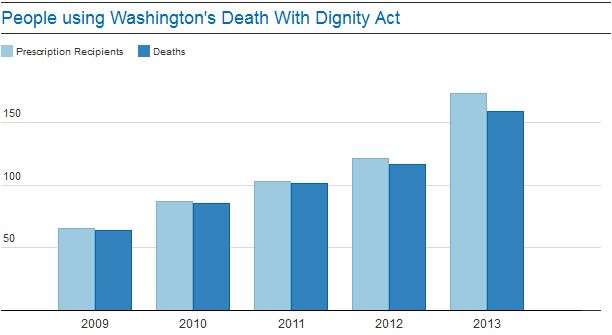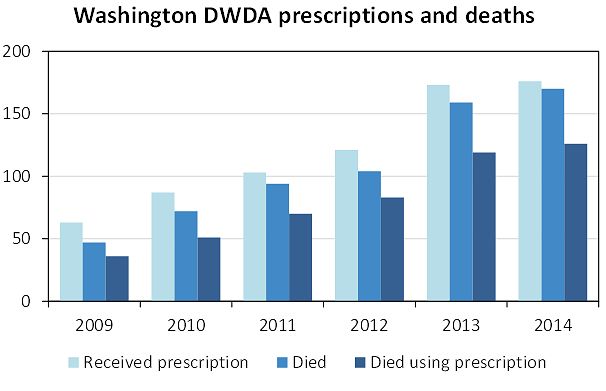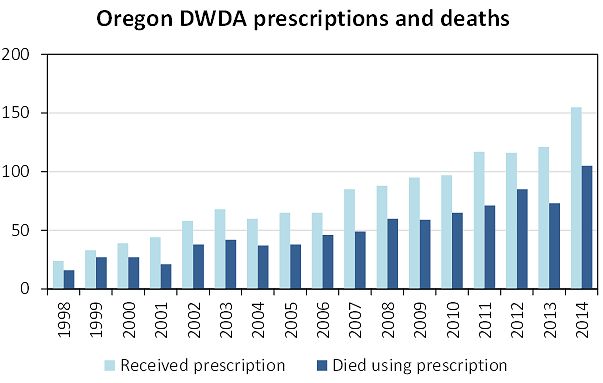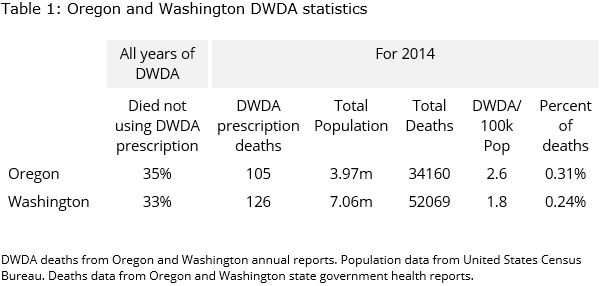So easy to get it wrong
I was browsing the internet the other day checking out commentary on assisted dying in Oregon and Washington state in the USA, and came across an argument in The Guardian—complete with a chart of 'evidence'—that unlike in Oregon, almost all folks who receive a prescription under Washington's Death With Dignity Act (DWDA) die from taking it. 'Eh!?' I thought to myself. I've read all the Washington annual DWDA reports and analysed the data in my own spreadsheets. What The Guardian says is simply not true. How so?
In an editorial on July 18, 2014, The Guardian attempted to estimate the number of people who might use an assisted dying law if it were legalised in the UK. They noted that around a third of Oregonians receiving a prescription under the DWDA died not having taken it. But, they said, "the figures in Washington look quite different. For instance, there isn’t as large a gap in numbers between those who were given prescriptions and those who died." And they offer this chart, which essentially reproduces Figure 2 of Washington's 2013 DWDA annual report, as evidence.

Therein lies a significant problem: the time-poor mistake of grabbing some data out of a report and reproducing it without reading the whole report to understand what the data represents or what it means, and, more particularly, what it doesn't mean.
The thing about the Washington DWDA annual reports, when you read them properly, is that they generally report statistics for all people who have qualified under the Act, i.e. have passed all the critieria and had a prescription written. This is different from the Oregon reports, where most of the statistics relate to people who died by ingenstion of their prescription. This can account for some discrepancies between the two states, and caution in comparing certain statistics.
But the bigger issue, and the cause of the misunderstanding of The Guardian, was twofold. Firstly, as explained, the Washington data quoted was for total deaths of DWDA qualifiers, not of deaths by ingestion of the prescription. Secondly, it is longitudinal data for the deaths of DWDA qualifiers who died in any year, allocated to the year of their first qualification under the DWDA: i.e. backdated.
Oregon doesn't report its data in this way, so comparisons cannot be made on that basis. Both states do report the net number of deaths within a calendar year, so that provides a basis for useful comparison. Using this basis, the Washington data looks like this (updated with avialable 2014 data):

The comparable data from Oregon (without 'Died' because that statistic is not reported in a way that can be compared), looks like this:

So, Oregon and Washington are indeed quite similar. Overall statistics are:

Nearly the same proportion of those who die in relation to Washington's DWDA but don't use their medication, as do in Oregon. That's quite a different picture from the one created in understandable haste by The Guardian.
